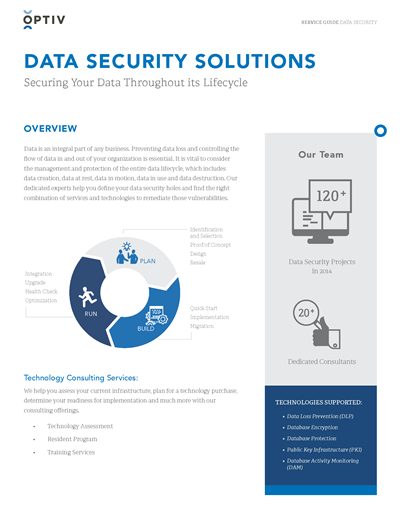Best Practices for Data Destruction to Fortify Your Cyber Security Framework
Best Practices for Data Destruction to Fortify Your Cyber Security Framework
Blog Article
The Relevance of Effective Information Devastation Practices in Shielding Sensitive Information and Ensuring Computer Safety And Security
In a period where information breaches are significantly common, the significance of reliable data destruction techniques can not be overstated. Organizations face considerable dangers when sensitive details is improperly thrown away, potentially leading to unapproved accessibility and serious economic effects. Carrying out durable data destruction techniques not just mitigates these risks but also straightens with lawful conformity demands, making sure that organizations support their credibility and foster client count on. The question remains: what details methods can be utilized to enhance these techniques, and exactly how can organizations effectively incorporate them into their overall cybersecurity structure?
Understanding Information Destruction
Recognizing data devastation is important in today's digital landscape, where delicate information can conveniently be compromised. Efficient data damage involves not simply making certain but erasing documents that data is irretrievable with thorough methods. This process is essential for organizations that manage confidential client info, copyright, or inner records, as any breach can cause extreme economic and reputational consequences.
Data damage incorporates numerous techniques, including shredding physical media, degaussing magnetic storage space devices, and employing software-based services that overwrite information several times. Each approach offers a specific purpose and must align with the sensitivity of the info being taken care of. Physical devastation is often preferred for tough drives having very personal information, while software application techniques might suffice for much less sensitive details.
In addition, sticking to market requirements and policies, such as the General Data Defense Guideline (GDPR) or the Medical Insurance Portability and Accountability Act (HIPAA), is vital for compliance and to minimize lawful dangers. Organizations must create a robust data devastation policy, train employees on ideal methods, and frequently audit their treatments to guarantee that all delicate info is dealt with firmly and successfully.
Risks of Inadequate Practices
Poor data devastation methods reveal organizations to significant dangers that can have far-reaching effects. When sensitive information is not appropriately dealt with, it continues to be prone to unapproved gain access to, which can lead to information breaches and identification theft. Such occurrences not only jeopardize the security of individuals yet also taint the organization's online reputation, resulting in a loss of consumer trust and prospective financial consequences.
In addition, regulatory compliance is significantly stringent in numerous sectors. Failure to abide by information devastation regulations can result in hefty fines and lawsuits versus organizations. These penalties can strain monetary sources and draw away interest from core organization procedures.
In addition, the misuse of residual data can result in copyright theft or business espionage, endangering affordable benefits (data destruction). The influence of poor information devastation extends past prompt economic losses; it can additionally cause lasting damages to brand name honesty and market setting

Organizations have to identify that information protection is not only concerning protecting against violations; it additionally incorporates the accountable administration of data throughout its lifecycle. Overlooking effective data devastation methods can have tragic effects, highlighting the requirement for robust measures to minimize these threats.
Finest Practices for Data Destruction
Implementing reliable information damage practices is important for safeguarding sensitive details and preserving compliance with regulatory criteria. Organizations must adopt a multi-faceted approach to ensure that data is irretrievable, thereby protecting against unapproved gain access to and potential violations.
First, data need to be categorized based on level of sensitivity, allowing companies to apply appropriate damage methods customized to the level of threat. For electronic information, using software-based data-wiping devices that follow industry requirements can efficiently overwrite existing information. Physical destruction approaches, such as shredding or degaussing, are important for devices that keep sensitive info, ensuring total eradication.
Developing a clear data retention plan is vital, outlining the length of time different kinds of info should be retained prior to damage. Regular audits of data storage systems are additionally necessary to determine unneeded or outdated data requiring removal.
Moreover, training staff members on the value of information damage and the certain protocols to follow fosters a culture of protection within the organization. Preserving documentation of information damage processes provides liability and supports conformity with external regulations and inner policies. By sticking to these finest methods, organizations can significantly mitigate the risks linked with information direct exposure.
Legal and Compliance Factors To Consider

Failing to adhere to these guidelines can cause severe charges, consisting of substantial fines and reputational damages. Organizations must execute a durable information devastation policy that lines up with these read this post here legal frameworks and click to read supplies clear standards on the correct methods of data disposal, whether physical shredding or digital wiping.
Additionally, keeping documents of data destruction activities is vital for showing conformity throughout audits or examinations. By focusing on lawful and conformity considerations, organizations can enhance their data safety and security pose and foster depend on with stakeholders and customers, eventually adding to a much more safe information administration atmosphere.
Benefits of Effective Data Damage
Effective data destruction practices extend beyond mere compliance; they offer significant advantages to organizations that prioritize them. By guaranteeing that sensitive information is irretrievably destroyed, organizations mitigate the threat of information violations and the prospective monetary consequences connected with them. This aggressive strategy not only safeguards versus unapproved accessibility but likewise improves the general dependability of the company in the eyes of stakeholders and clients.
Executing robust data destruction methods, such as physical destruction of storage space tools or innovative information cleaning methods, contributes to the conditioning of an organization's cybersecurity pose. data destruction. It minimizes the possibility of intellectual building burglary and safeguards exclusive info, thereby keeping an one-upmanship in the market

Verdict
Finally, efficient data damage techniques are essential for protecting sensitive info and improving general computer system protection. By implementing comprehensive methods such as shredding, software application, and degaussing overwriting, companies can alleviate the dangers connected with unauthorized gain access to and data breaches. Adherence to regulatory standards, consisting of GDPR and HIPAA, more enhances conformity and safeguards against legal repercussions. Inevitably, a dedication to durable data destruction strategies cultivates a society of obligation, thus strengthening a company's cybersecurity stance and preserving client trust.

Report this page